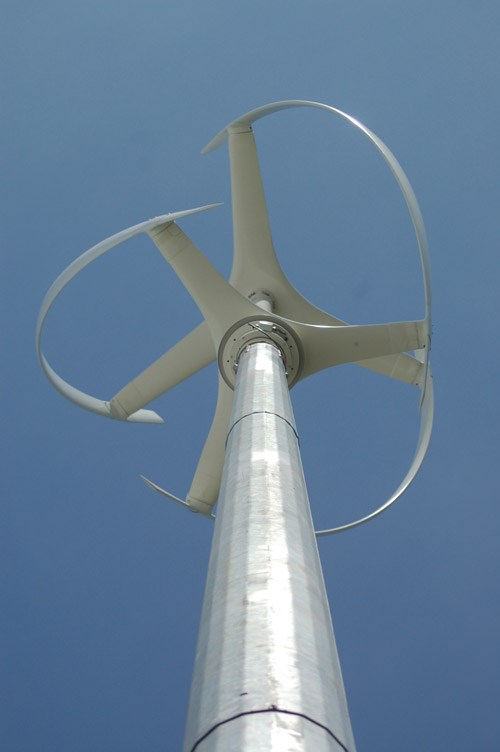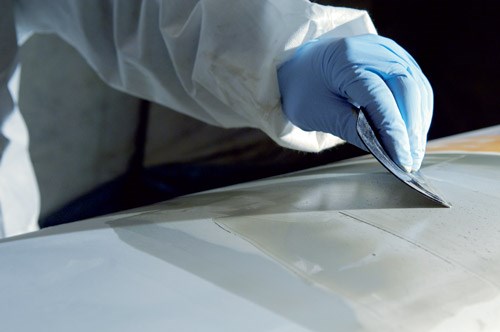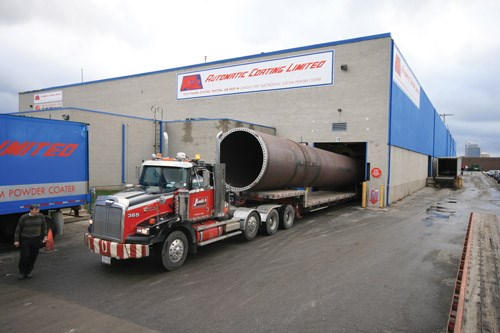About one-fourth of the wind energy produced worldwide in 2011 comes from the U.S., Canada and Brazil. Here in the U.S., the wind energy market grew by about 60 percent from 2009 to 2010, and with more than 40,000 installed megawatts, we rank second to China.
Those numbers have caught the attention of finishers, who see a new market to plate parts, e-coat or powder coat turbines, or paint and anodize the hundreds of necessary components.
Shops like Landmark MetalCoat in Temecula, Calif., have made a concerted effort to go after projects in the wind energy market. Company President Jeff Smullen said that, as the wind energy industry continues to grow, wind turbine operators and blade manufacturers have discovered that blade pitting creates unstable harmonics and decreases efficiency, while increasing maintenance and repair costs.
“As the number of wind power installations in the United States increases dramatically, we look forward to providing this industry with viable and cost-effective solutions to some very real problems,” Smullen says. “Our research and testing shows us that certain metals, such as stainless steel, provide unique protection and performance benefits that are far superior to all other solutions available today.”
Automatic Coatings in Toronto, Canada, has been keeping its eye on the wind energy industry for several years and has been able to nab a few contracts for coating the large metal bases upon which the turbines sit. With a 35-foot paint booth, the company has used some ingenuity to coat projects up to 70-feet long, including many wind energy parts. The company specializes in coating pipes for the gas and oil industry, so it knows about working with large sizes.
“If we can get it in our doors, we’ll coat it,” says Jocelyn Williams, the company’s vice president for business development. “We know that wind energy is going to be an emerging market for us to go after, so we’ve tried to make it known we can do such large parts. It’s a valued-added service we provide to manufacturers who don’t need to build up their own paint shop; we’re here for them.”
Specialty coatings giant BASF says it is represented in the wind-turbine coating industry in all of the major markets worldwide—in the leading European markets as well as in Asia and in the American continents, where demand has grown at an above-average rate in recent years.
“We are now reaping the benefits of having discovered the wind energy market at an early stage, for having invested in innovative products early on and for having built up a wealth of valuable experience,” says Dr. Achim Gast, BASF’s industrial coatings manager.
The company’s latest product development is a new high-solid rain erosion coating based on polyurethane bonding. Gast says its higher solids content compared with conventional coatings reduces solvent emissions, cuts down on weight due to thinner coating layers and is highly erosion resistant. He says it provides two and a half to five times better protection against the extreme environmental conditions to which a typical turbine blade, measuring an average of 45 meters length and installed at a height of about 90 meters, is exposed.
The uniqueness of the turbine blades has caused some manufacturers to come up with improved weather resistant coatings.
“In severe wind conditions at this height, raindrops can turn into veritable missiles, not to mention grains of sand that can be stirred up in locations where wind turbines are installed in arid zones,” Gast says. “The blade coatings are under constant attack from the cold, heat and UV radiation, and yet they are still expected to last for between 10 and 20 years.”
According to Automatic Coatings’ Williams, “You want it coated right the first time, because it’s not a great idea to send someone up 300 feet in the air to recoat these things.”
The AWEA says that in 2010, the industry reached 50 percent domestic content for U.S.-deployed turbines, and that percentage will continue to rise with stable policy signals.
Carey says that in 2010, 14 more manufacturing facilities came online to serve the industry. She also says that wind farms provide lease payments to landowners—$3,000 a year per turbine is typical — giving America’s farmers and ranchers a stable, new cash crop, as well as adding tax revenue to local communities, allowing them to build hospitals, schools, town halls and libraries.
After California Gov. Jerry Brown called for cleaner, affordable and homegrown energy with the strongest renewable target in the U.S. at 33 percent renewables by 2020, the state began realizing the economic benefits. Carey says the state now supports 15 wind-related manufacturing facilities with 4,000 – 5,000 permanent workers.
The AWEA says that the U.S. is ahead of schedule to make 20 percent of its electricity from wind by 2030, the goal identified during the Bush administration.
What could make an even bigger impact for the metal finishing industry is the introduction of “quieter” wind turbines into the U.S. market that could find their way into suburbs and more dense neighborhoods because of their lack of noise.
Jotun, a Norwegian painting and powder coating supplier, says it has seen increased business in Europe and Australia with its partnership with Quiet Revolution-brand wind turbines—vertical axis turbines that capture wind from all directions and can generate power at a higher level of productivity. The turbines are especially suitable for use in urban areas and can supply enough energy to power a home or small office building.
“These small turbines have raised much attention from the public, and we believe that this technology has a bright future,” Jotun’s Frank Brown says. “We are very pleased to have been given the opportunity to provide our products and services in this innovative project.”
So what lies ahead for the wind energy market, and how will this all help coaters and finishers? For starters, the AWEA says that 2011 is already guaranteed to be the biggest year yet for offshore wind milestones in the U.S.
Earlier this year, Secretary of the Interior Ken Salazar and Secretary of Energy Steven Chu unveiled a coordinated strategic plan called “A National Offshore Wind Strategy: Creating an Offshore Wind Industry in the United States,” which pursues the goal of 10 gigawatts of offshore wind capacity by 2020 and 54 gigawatts by 2030.
They also promised $50.5 million in federal dollars for projects that support offshore wind energy deployment.
In addition, Secretary Salazar announced the creation of high-priority Wind Energy Areas through the “Smart from the Start” initiative, and the Bureau of Ocean Energy Management, Regulation and Enforcement designated leasing areas for wind energy off the coasts of Delaware, Maryland, New Jersey and Virginia, and outlined plans to identify additional WEAs off the coasts of Massachusetts and Rhode Island. n
RELATED CONTENT
-
Choosing the best process for your operation.
-
Maximilian Kessler from SurTec explains new practices for industrial parts cleaning, metal pretreatment and decorative electroplating in the medical device industry.
-
This important first step can help prepare the metal for subsequent surface finishing.



















